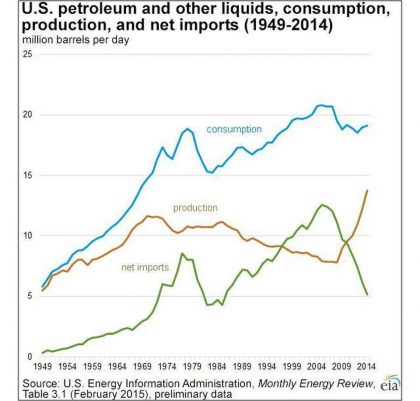
There are several factors that affect the price of gas at the pump. These include federal, state and local taxes, refining costs, and marketing/distribution. However, the price of crude oil plays the biggest role. Crude oil is the main ingredient in gasoline and therefore, gas prices are directly tied to crude prices.
Unless we make full use of American energy resources here at home, United States gasoline consumers will again be vulnerable to political developments that unfold around the world. This dynamic has played out repeatedly in our nation’s history, with several examples from recent decades that led to significant pain for Americans at the pump. During these price spikes, many Americans, including those living at or below the poverty line, were forced to choose between paying rent and fueling their cars to commute.
1973-1974 Arab Oil Embargo
1979 Oil Crisis
1990- 1991 Gulf War
2011 Arab Spring
—
Since 2010, increased domestic production of oil and gas has reduced American dependence on foreign oil. As production in the U.S. increases, consumers have seen decreases in prices at the pump and more disposable income to use on other necessities. Recently, Americans have seen another hike in gas prices, fueled once again by decisions in foreign capitals and geopolitical unrest. However, in contrast to previous crises, and as a result of increased American production, so far consumers have seen a more modest 5 percent bump in gas prices. In other words, increased American production has shielded American citizens from foreign price shocks. Simply put, the more we produce energy here at home, the lower and more stable prices at the pump will be.
For example, in 1978-1979, Americans watched prices rise by more than 28 percent from previous years, as the Iranian Revolution took place halfway around the world. During the early 1990s, with the start of the Gulf War, there was an 11 percent hike in gas prices. The last time the United States saw a significant price spike was during the 2011 Arab Spring when prices spiked around 24 percent.